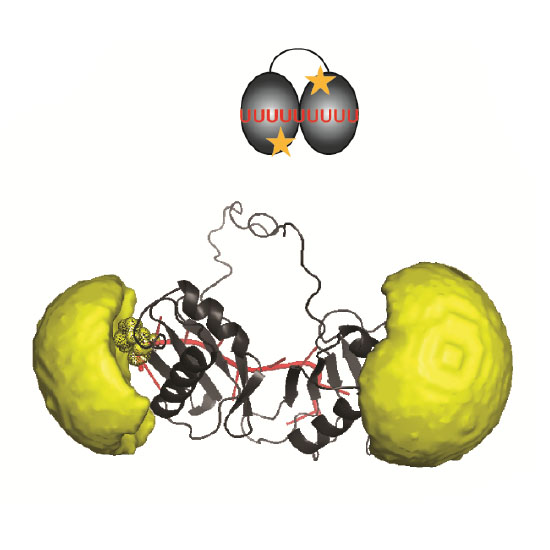Effects of Fluorophore Attachment on Protein Conformation and Dynamics Studied by spFRET and NMR Spectroscopy
10-Aug-2017
Chemistry - A European Journal, Volume23, Issue57, Pages 14267-14277, https://doi.org/10.1002/chem.201702423
Chemistry, online article
Fluorescence‐based techniques are widely used to study biomolecular conformations, intra‐ and intermolecular interactions, and conformational dynamics of macromolecules. Especially for fluorescence‐based single‐molecule experiments, the choice of the fluorophore and labeling position are highly important. In this work, we studied the biophysical and structural effects that are associated with the conjugation of fluorophores to cysteines in the splicing factor U2AF65 by using single pair Förster resonance energy transfer (FRET) and nuclear magnetic resonance (NMR) spectroscopy. It is shown that certain acceptor fluorophores are advantageous depending on the experiments performed. The effects of dye attachment on the protein conformation were characterized using heteronuclear NMR experiments. The presence of hydrophobic and aromatic moieties in the fluorophores can significantly affect the conformation of the conjugated protein, presumably by transient interactions with the protein surface. Guidelines are provided for carefully choosing fluorophores, considering their photophysical properties and chemical features for the design of FRET experiments, and for minimizing artifacts.











